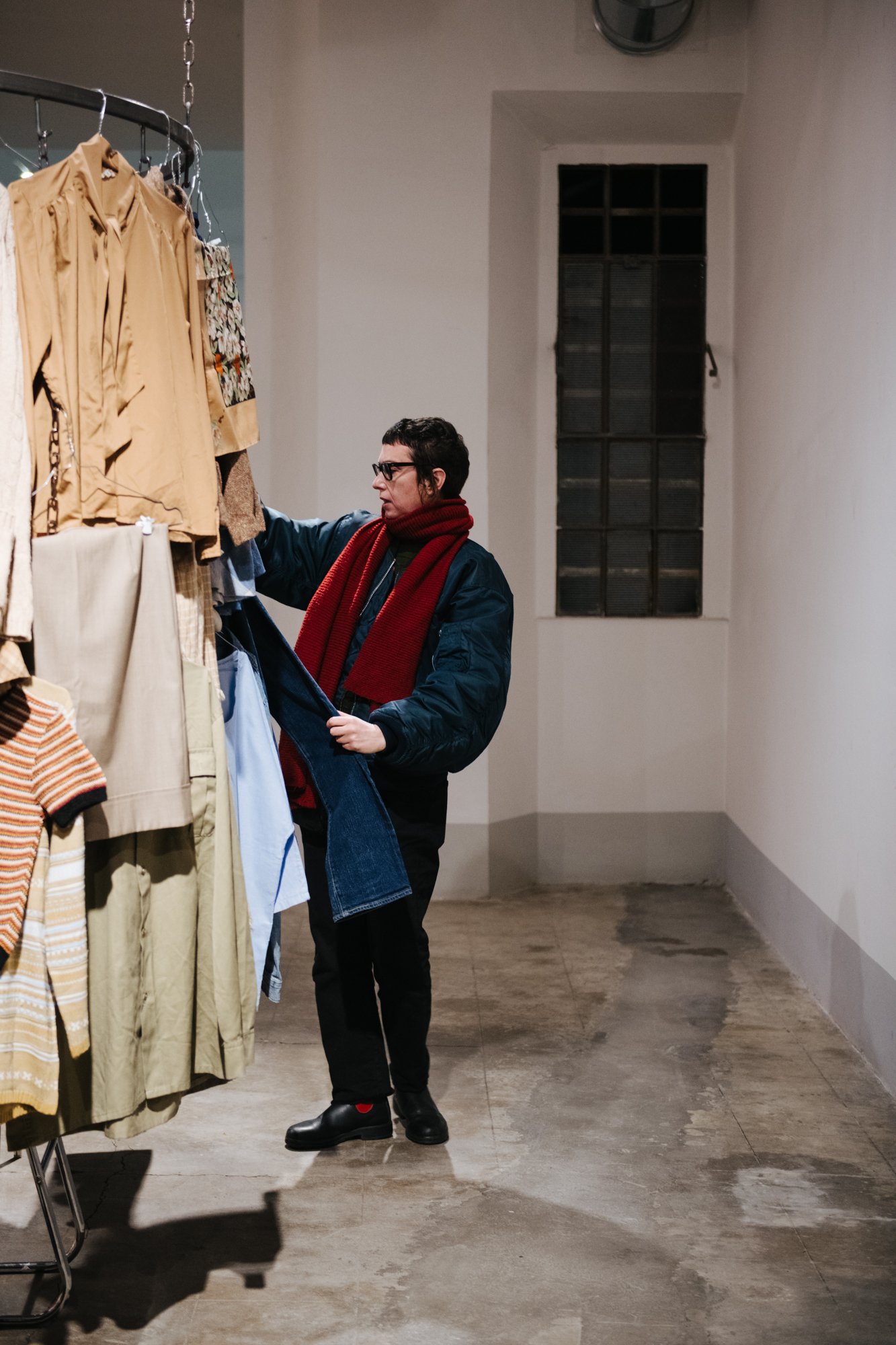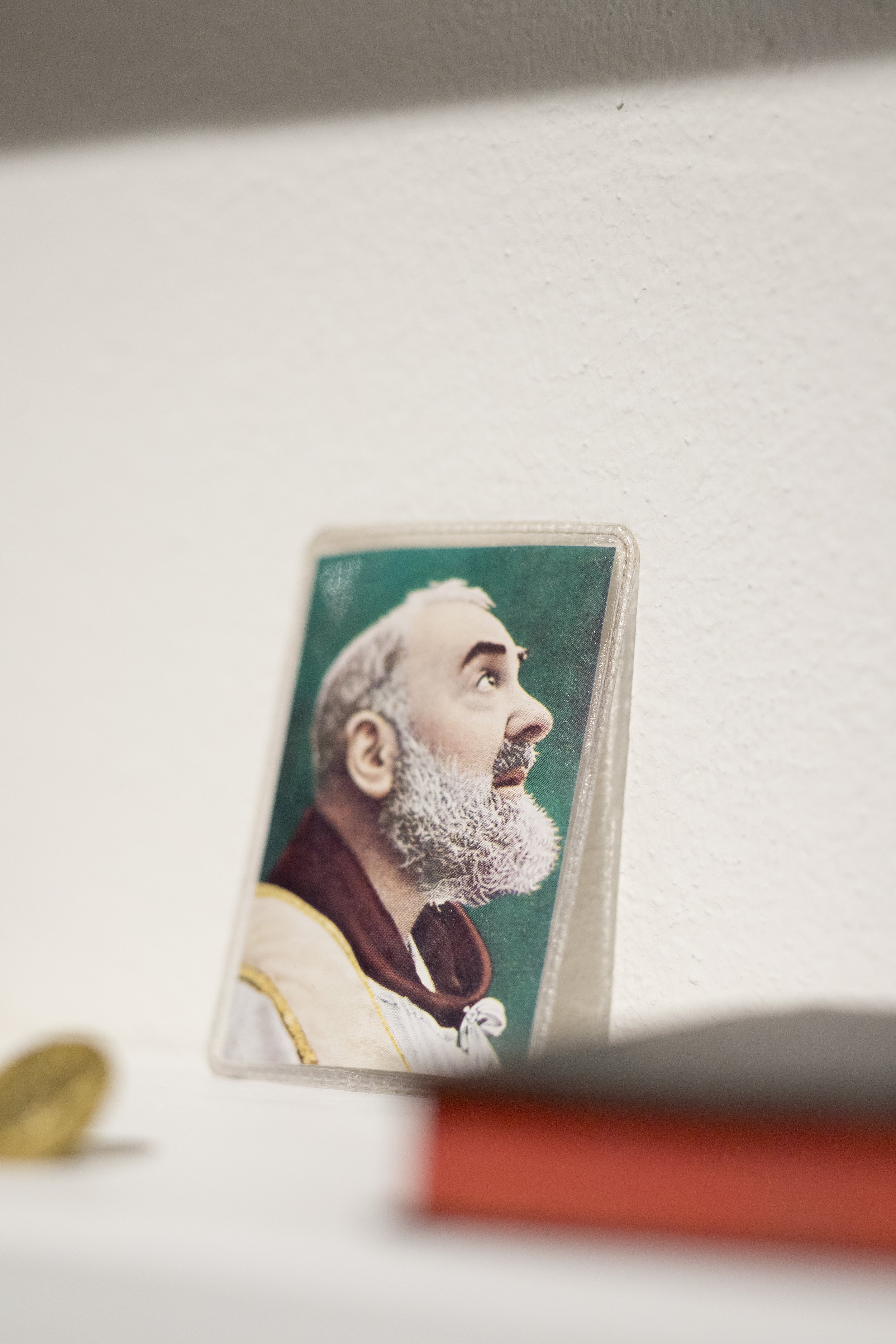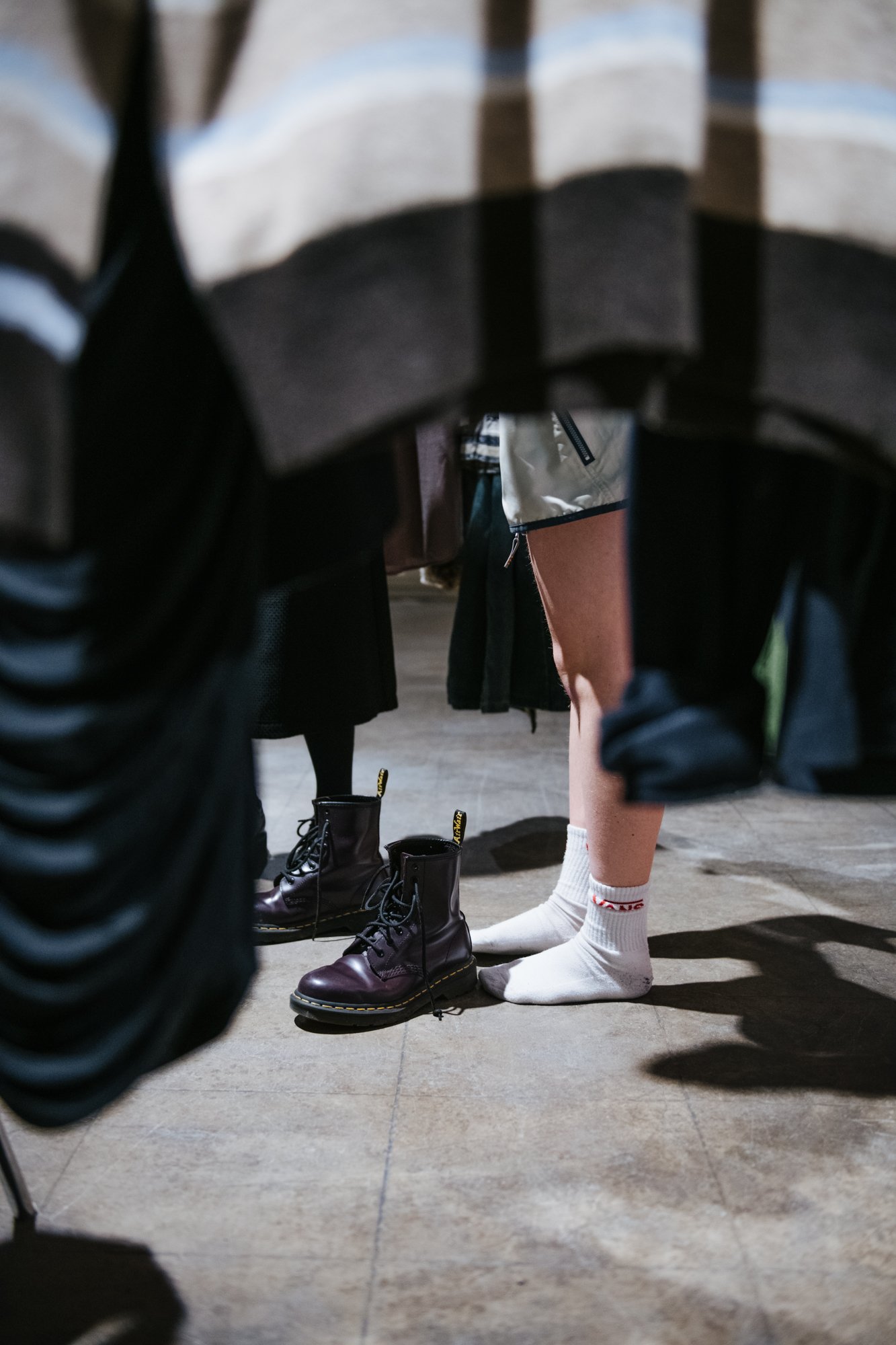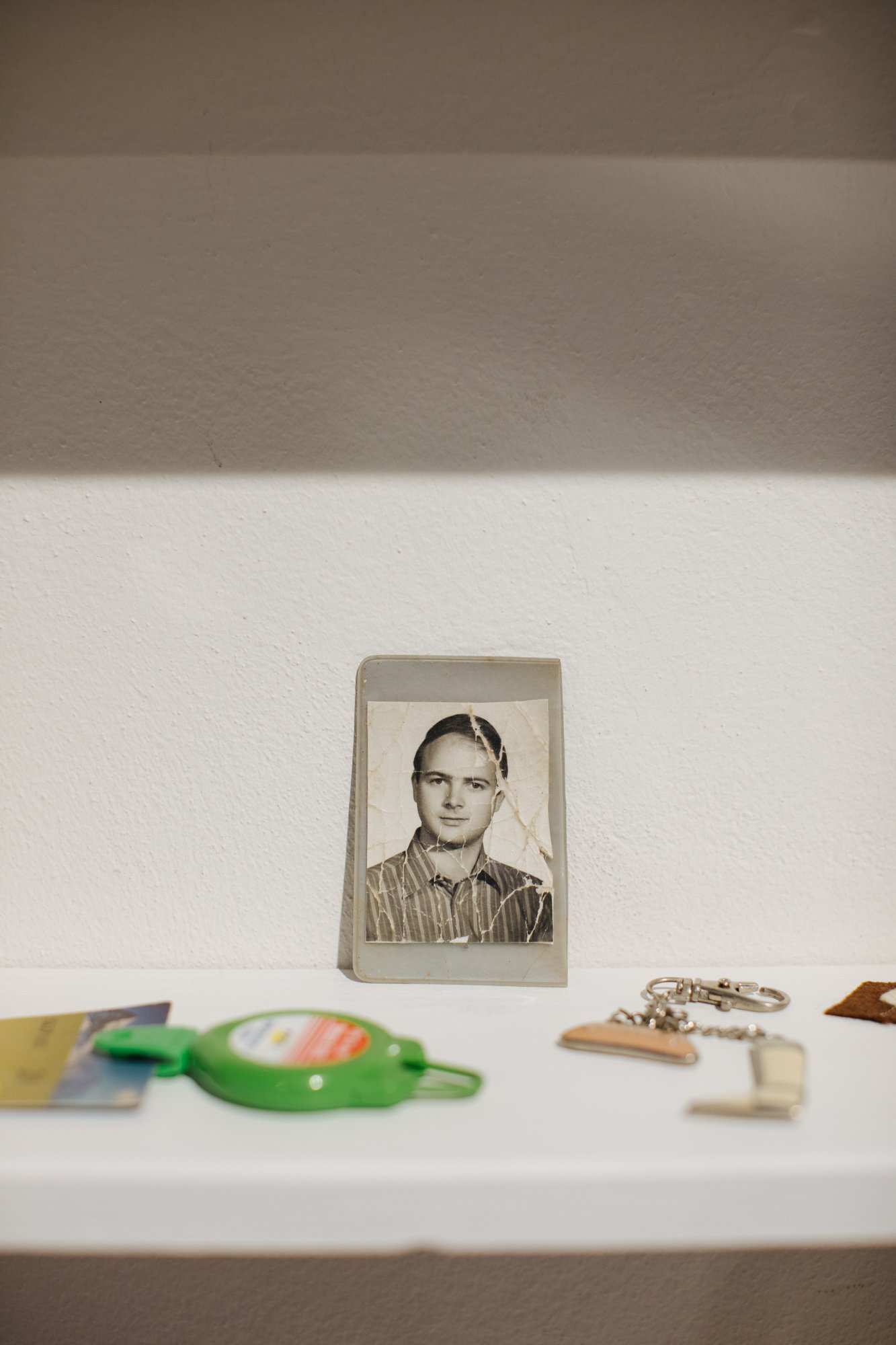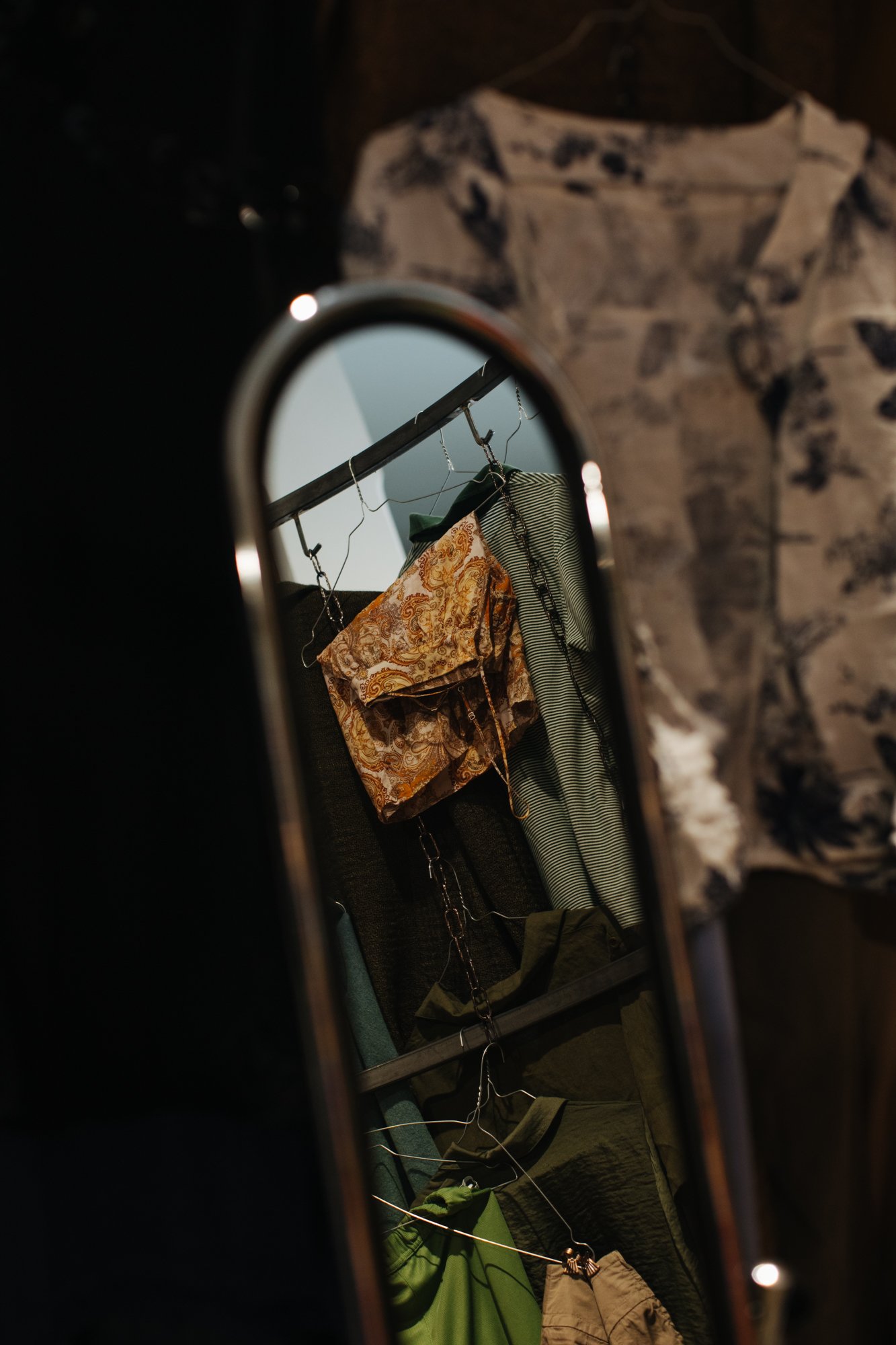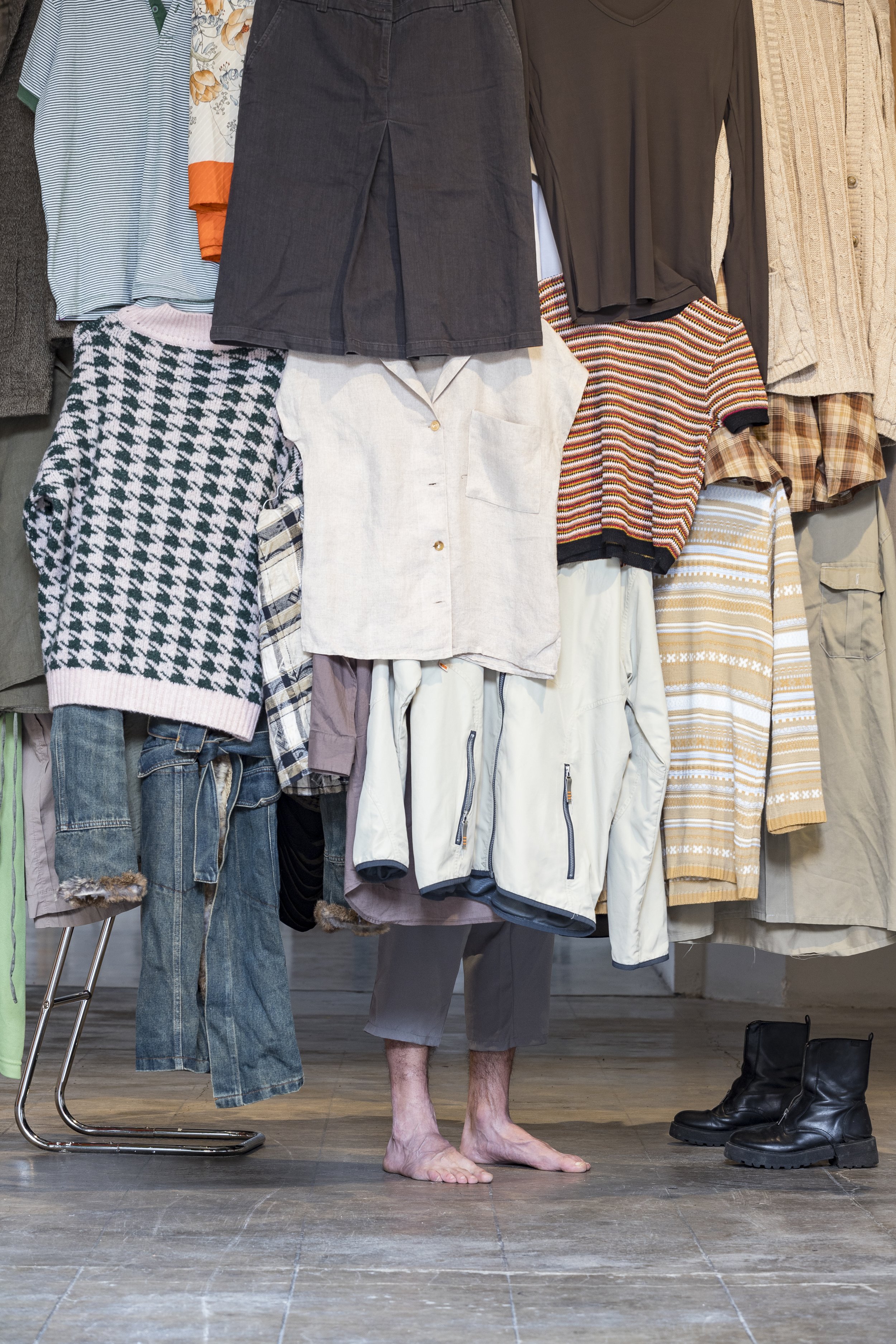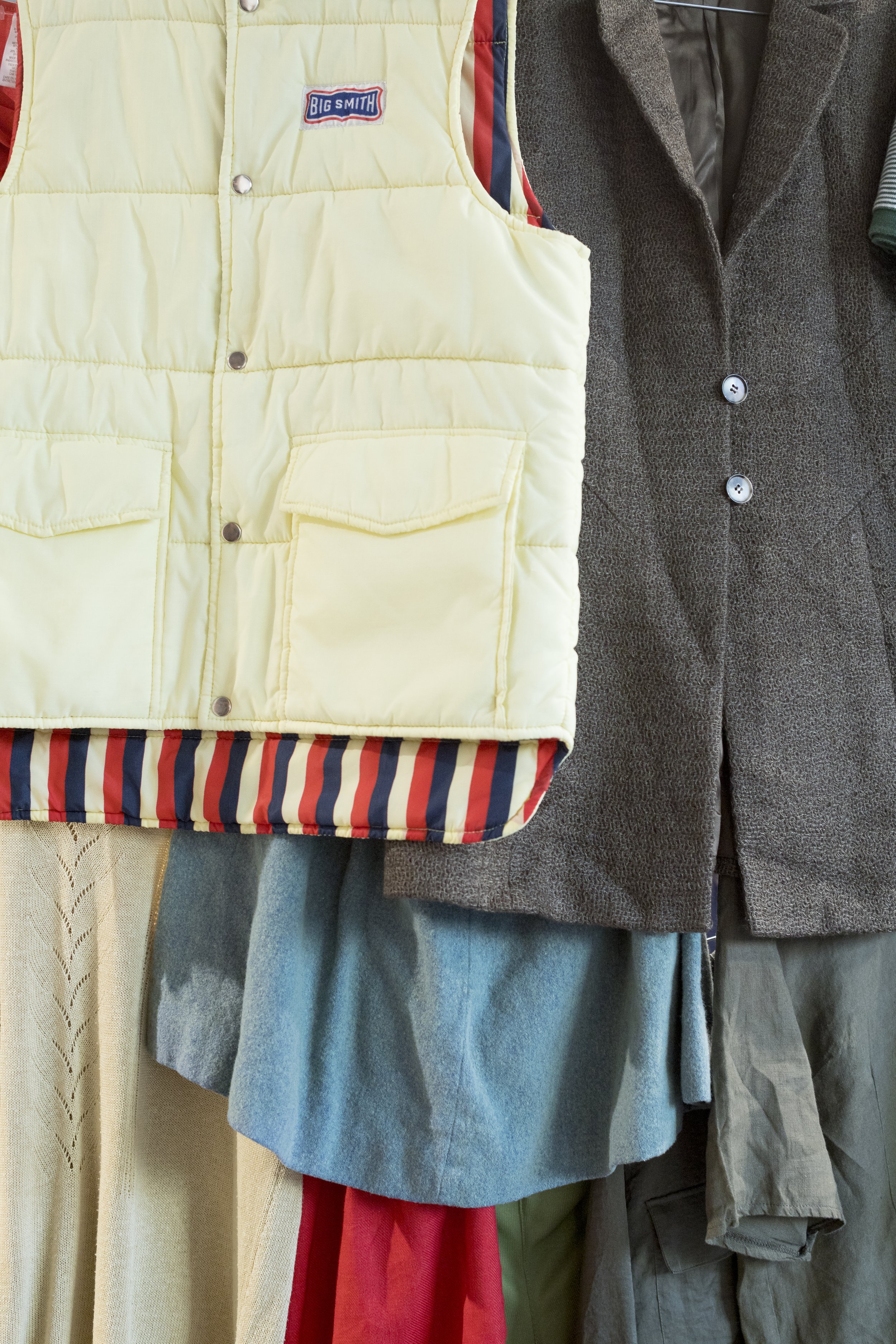Second Skin, 2024, second-hand garments, iron, found objects. Exhibition view
Photo: Alessandro Destro
3.03. — 31.05.2024
Second Skin is a performative installation that invites us to reflect on the legacy of experiences we leave on our clothes, as well as the dynamics of appropriation and identification we create with them.
A few meters above the floor, a cylindrical structure covered with second-hand clothes hovers in the room. The audience is invited to view the clothes and exchange one garment for the one they are currently wearing. The specifics of this interaction are limited by a few basic guidelines, the main one being that it must take place on the skin of the audience.
Hannes Egger isolates the moment, enriches its gestures and accentuates them with the immediacy and sharpness of the performative language of his work. In this case, he interacts with the second-hand and vintage market, which he discovered during his residency at Lottozero and studied as a phenomenon of economic history.
SECOND-HAND AND VINTAGE MARKET
For more than 100 years, "rags" (used clothing) from around the world have been collected in Prato; wool rags are sorted by composition and processed into regenerated fibers that can be spun and woven into textiles. Even today, thousands of garments arrive each year to be processed into regenerated wool or used as insulation or padding materials in the case of other blends. Some of these garments are sorted to be reused and then sold as second-hand clothing. This is a process that is considered exemplary today (only 3% of used clothing ends up in landfills between reuse and recycling), but in the past the origin of the material was hidden because of the low regard given to recycled yarn, despite the fact that it actually built the district's economy, especially from after World War II to the 1980s.
Garments that were taken out of the remanufacturing cycle and reintroduced into the wholesale retail market tell us a different story: since the 1990s, brand appeal has trumped garment value in terms of craftsmanship and raw materials. This trend has continued until the emergence of fast fashion, which compromises quality for cheapness on the altar of an increasingly relentless and environmentally unsustainable consumerism.
Second Skin, 2024, second-hand garments, iron, found objects. Exhibition view
Photo: Toast_Studio. Courtesy Aprto
Second Skin, 2024, second-hand garments, iron, found objects. Exhibition view
Photo: Alessandro Destro
CLOTHING AS IMPRINT OF EXISTENCES
Second Skin condenses these last fifty years of history within its circular microcosm, in which the audience is invited to enter and change clothes, leaving their own imprint on the work that includes their unique style, consumption patterns, and even scent. The space of the work is thus transformed into a place to participate in an exchange that also carries with it the imprint of a lived experience. Like heirlooms unearthed from the pockets of the used clothes the collection of objects in the exhibition tells us this: they are concretions of previous lives, fragments of social histories and habits, attesting to the extent to which clothing is, in essence, a carrier of existences.
Photos: Toast_Studio, Alessandro Destro
The project is part of
In collaboration with
Lavanderia Montalese di Colligiani E. & C.





